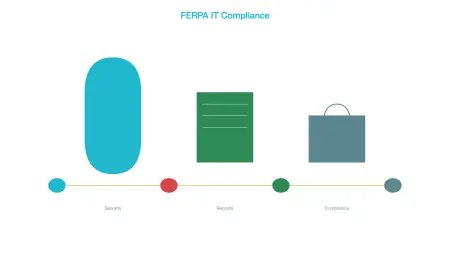Top 7 Essential Tools for Generative AI Development
Generative AI is reshaping the way we create content, design products, and automate complex processes. To stay ahead in this rapidly evolving field, developers need the right tools for training, deploying, and fine-tuning AI models. This article explores the seven most essential tools for generative AI development in 2025—covering everything from model-building frameworks to infrastructure, APIs, and collaborative platforms.

Generative AI has moved from novelty to necessity. It powers everything from text generation and image creation to video synthesis and code automation. Whether you're building an AI writing assistant, image generator, or custom LLM (large language model), the tools you use can make or break your success.
To stay competitive and innovate faster, many businesses are turning to Generative AI Services. These services provide the infrastructure, models, and expertise needed to develop and scale intelligent applications efficiently.
In this post, we’ll explore seven must-have tools that developers, researchers, and AI-focused companies are using to build, scale, and innovate with generative AI.
1. TensorFlow + Keras
Why it matters:
TensorFlow, developed by Google, remains one of the most robust open-source machine learning libraries. Its high-level API, Keras, makes it accessible for prototyping and production-level AI models, including generative adversarial networks (GANs) and variational autoencoders (VAEs).
Use Cases:
-
Building text and image generation models
-
Training VAEs or custom GANs
-
Fine-tuning transformer models
Features:
-
GPU and TPU support for fast training
-
Scalability across large datasets
-
TensorBoard for visualizing training metrics
2. PyTorch
Why it matters:
PyTorch, backed by Meta (Facebook), is favored by researchers for its flexibility and dynamic computation graph. It’s the go-to framework for cutting-edge generative models like DALL·E, GPT, and Stable Diffusion.
Use Cases:
-
Training custom LLMs
-
Implementing diffusion models and transformers
-
Experimenting with prompt engineering and embeddings
Features:
-
Easy debugging with native Pythonic syntax
-
Strong support from Hugging Face and OpenAI integrations
-
Fast deployment with TorchServe
3. Hugging Face Transformers
Why it matters:
Hugging Face has become synonymous with modern NLP and generative models. Their Transformers library provides pre-trained models like GPT-2, GPT-3, BERT, and Stable Diffusion, making it easier to fine-tune and deploy.
Use Cases:
-
Text summarization, generation, translation
-
Conversational AI and chatbots
-
Rapid prototyping with pre-trained models
Features:
-
API and model hub access
-
Easy integration with PyTorch and TensorFlow
-
Inference API for hosted deployment
4. OpenAI API
Why it matters:
For developers who want access to powerful generative models without building them from scratch, the OpenAI API provides instant access to models like GPT-4, DALL·E 3, and Whisper.
Use Cases:
-
AI writing assistants
-
Image generation tools
-
Natural language interfaces
Features:
-
Pay-as-you-go pricing
-
Simple API integration with JavaScript, Python, and more
-
Support for custom instructions and fine-tuning
5. Weights & Biases
Why it matters:
When developing large-scale generative models, monitoring and tracking your training experiments is crucial. Weights & Biases (W&B) offers tools for experiment tracking, model versioning, and collaboration across teams.
Use Cases:
-
Logging training performance and hyperparameters
-
Visualizing model outputs (text, images)
-
Comparing runs for model optimization
Features:
-
Seamless integration with PyTorch, TensorFlow, Hugging Face
-
Model checkpoint management
-
Collaboration-ready dashboards
6. LangChain
Why it matters:
LangChain is a powerful framework designed to build context-aware applications that rely on LLMs. It enables chaining together of prompts, memory, APIs, and external tools to create agents and workflows.
Use Cases:
-
AI-powered chat interfaces
-
Knowledge-based Q&A bots
-
Retrieval-Augmented Generation (RAG) systems
Features:
-
Open-source, Python-based
-
Works with OpenAI, Cohere, and Hugging Face
-
Ideal for building apps with memory and context-awareness
7. RunwayML
Why it matters:
RunwayML democratizes access to creative AI tools. It offers a user-friendly platform for generative AI projects involving video, audio, and 3D. For developers and creatives alike, Runway bridges the gap between code and content.
Use Cases:
-
AI video generation (like Gen-2)
-
Style transfer, face swaps, motion design
-
Low-code/no-code AI experimentation
Features:
-
Web interface and plugin support
-
Collaboration tools for creative teams
-
Pretrained models for immediate use
Bonus Tools Worth Exploring
-
Replicate – For running open-source models in the cloud with one line of code
-
Gradio – For creating shareable UI interfaces to test and deploy models
-
Google Colab / Kaggle Notebooks – For free access to GPUs and collaborative model development
-
Azure OpenAI / AWS Bedrock / Vertex AI – For enterprise-scale deployment and integration
Final Thoughts
Generative AI is no longer limited to research labs or billion-dollar companies. With the right tools, any developer or startup can build cutting-edge AI applications—whether that means designing an AI-powered art generator, building smart chatbots, or automating entire content pipelines.
To bring these ideas to life, many are leveraging professional AI Development Company. These services offer end-to-end support, from model selection and training to deployment and scaling, making it easier to create powerful, real-world AI solutions.
As you dive deeper into generative AI development, choose the tools that align with your workflow, budget, and business goals. And don’t forget—tools are powerful, but your creativity and strategy will determine your success.
What's Your Reaction?
 Like
0
Like
0
 Dislike
0
Dislike
0
 Love
0
Love
0
 Funny
0
Funny
0
 Angry
0
Angry
0
 Sad
0
Sad
0
 Wow
0
Wow
0

















































